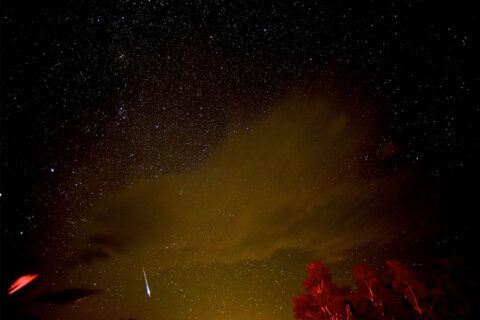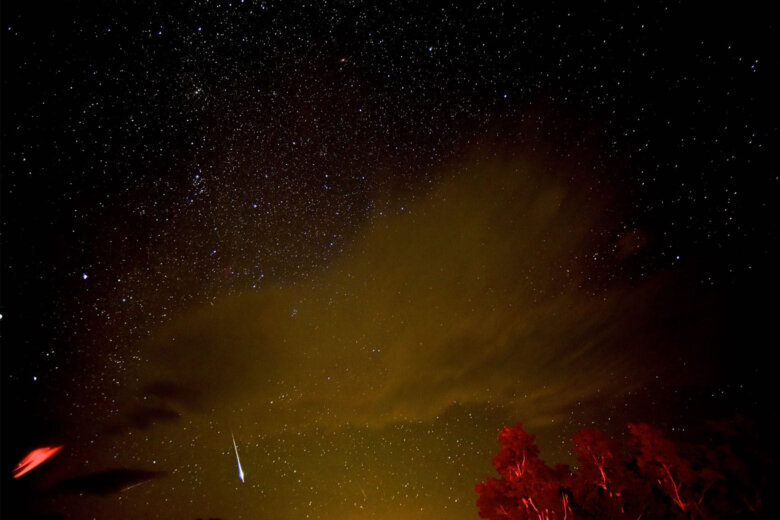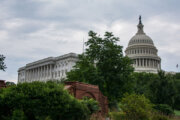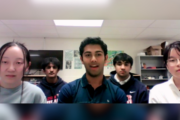
This weekend is a skywatcher’s joy, as the annual Shenandoah National Park’s Night Sky Festival coincides with the peak of the annual Perseid Meteor Shower.
The Annual Night Sky Festival involves the whole park and features family-friendly activities with astronomy and space exploration stuff for all ages. After admission to the park, all festival events are free, and indoor venue events take place rain or shine, while outdoor events are weather dependent. Rooms can be booked and there are places to eat to facilitate your stay.
Throughout the whole park there will be presentations, telescopes and various activities. If the weather cooperates, there will be telescopes available at night for festival-goers to look through as well as during the day to see our star, the sun, with properly filtered telescopes.
I’ll be at Big Meadows Visitor Center daily from 12:30 p.m. -1:30 p.m. (weather permitting) with my Unistellar smart telescope to show you the sun, and I will be giving daily presentations at the Big Meadows Visitor Center Auditorium.
Two additional events of interest are being hosted by Delaware North — the park’s concessionaire. On Friday night at 8:30 p.m. EDT, there will be telescopes set up — weather permitting — to view the night sky at the Big Meadows Area mile 51, outside the Rapidan Camp Gate.
On Saturday, from 11:30 a.m. to 1 p.m., enjoy a lunch (fee required) with NASA astronaut Tom Jones, a four-time space shuttle astronaut and personal friend of mine. Tom has been a mainstay at the Festival and will be thrilling audiences again this year.
Perfect Perseids
The Perseids will be perfect this year, unlike last year, when a full supermoon filled the sky to wash out many fainter meteors. The moon this year will not interfere, as it will be a waning crescent in the pre-dawn sky. At a dark sky site like Shenandoah with no moon present, one can expect to up to a 100 meteors an hour at the predicted peak of the shower. The Perseids can produce bright meteors called fireballs — meteors brighter than the planet Venus. Even living in the city and suburbs allows skywatchers to see these brighter meteors.
As I write this, the weather in the D.C. area for this weekend looks promising, with Friday night looking to be better than Saturday. The weather forecast at Shenandoah National Park looks promising as well. As long as the sky is not totally clouded out, it is worth watching the Perseids on both nights.
The predicted peak of the shower is at 3:58 a.m. EDT, Aug. 13, but it is worthwhile to start watching the sky at 11 p.m. local time on Aug. 11 and 12, and especially the hours before dawn to look for them. The best place to watch the Perseids is somewhere free of city lights that offers a clear view of the whole sky — like Shenandoah National Park.
Being comfortable is key to watching the shower.
Try your luck at photographing the Perseidss. It is very easy to do with minimal equipment and experience. Share your Perseid pics with us on X (formerly known as Twitter) and Facebook.
Due to light pollution, 80% of Americans cannot see the Milky Way Galaxy, our home galaxy. At Shenandoah especially this time of year, the Milky Way is a celestial splendor that can be seen sprawling across the sky from the South to the North. Many guests to Shenandoah National Park have never seen it, and some are moved to tears when they view the milky band for the first time.
The moon will be out of the sky for this year’s Festival, so the Milky Way will be at its best and visible as soon as it gets dark. Try taking a smartphone or camera pic of the Milky Way.
On Aug. 19, 2023, I will be hosting a “Basic Night Sky Photography in SNP” seminar. The Shenandoah National Park Association (SNPA) has Milky Way photographs I have taken in SNP for sale at the Big Meadows Visitor Center. All proceeds support SNPA.
I hope you will join us at the Night Sky Festival. The Park’s astronomy events continue throughout the season for when you get the “astronomy bug” during the Festival.
See you there!
Follow my daily blog www.whatsupthespaceplace.com and @SkyGuyinVA to keep up with the latest news in astronomy and space exploration. You can email me at skyguyinva@gmail.com.








